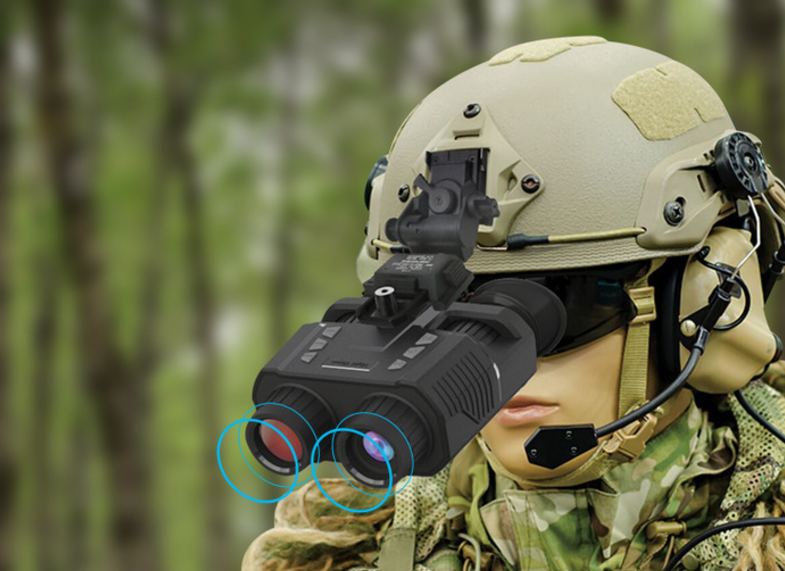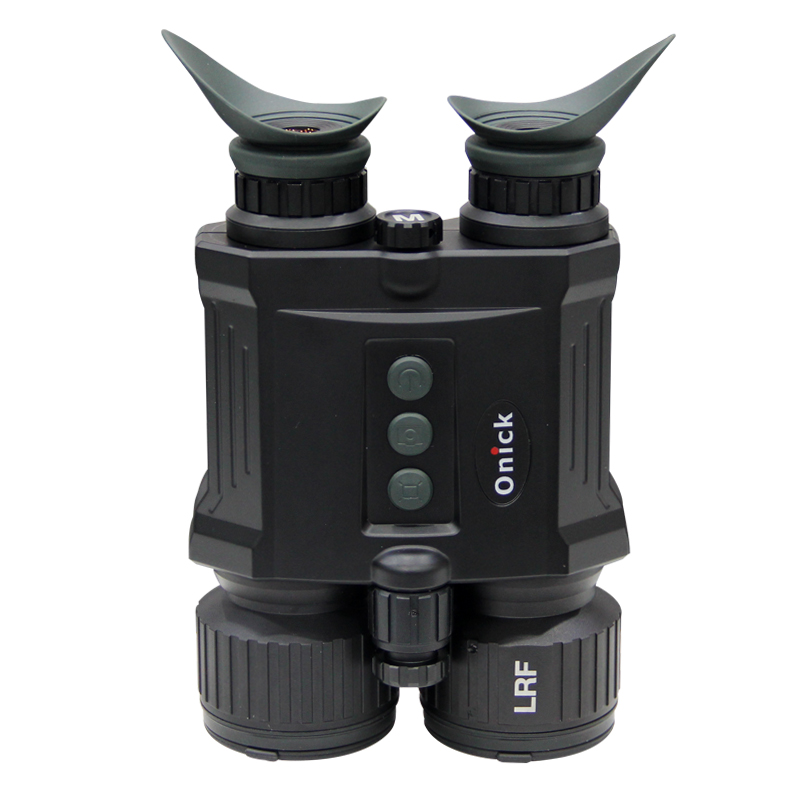Before choosing between night vision goggles and thermal imaging for night patrols, it's important to thoroughly understand the pros and cons of each, as well as the environment of the remote reconnaissance location. This decision should be made after careful consideration.
Thermal imagers: First, it's important to understand that a thermal imager is not a camera; it simply converts invisible infrared energy emitted by an object into a visible thermal image. A thermal imager, also known as a heat imager or infrared thermograph, is a device that detects infrared radiation emitted by an object and creates an image. The resulting thermal image corresponds to the heat distribution field on the object's surface. Generally speaking, the higher the object's temperature, the more radiant energy it emits. Since humans and animals are generally hotter than their surroundings, a thermal imager detects and receives this energy, creating a corresponding image, allowing the observer to see the target.

Because thermal imaging can sense temperature, it is less affected by the surrounding environment and can produce clear images even in low light, bright light, or backlight. It has a wide range of applications and is often used by public security brigades in drug and smuggling operations and criminal tracking, making it impossible for hiding suspects to escape.
Thermal imaging cameras detect heat, so they can often spot targets hidden in dense jungle or obscured by fog. However, because they produce thermal images, they often lack detail, requiring SWAT officers to gain experience before identifying a suspect's weak spots. Furthermore, using thermal imaging cameras for aiming assistance requires practice, as they are generally larger and heavier than night vision goggles.
Night vision goggles come in two types, depending on their internal structure. First, low-light-level night vision goggles, developed during World War II, primarily consist of image intensifier tubes and often require visible light to form an image. In most cases, starlight and moonlight provide sufficient illumination, but shadows cast by trees can also interfere. Modern night vision goggles often include infrared illuminators, which some people simply call lights, but the more accurate term is night vision image intensifiers. The second type, developed in the 1990s, incorporates digital technology into night vision goggles, featuring built-in LCD displays and low-light CCDs. These goggles can be used both day and night, but are more effective at night.

Low-light-level night vision devices typically provide more detailed and natural images, are more robust, and better absorb recoil. However, their disadvantage is that the electron tubes used to amplify external light sources are very sensitive and easily damaged if exposed to strong light. Therefore, night vision scopes should only be used at night and not during the day (except for digital night vision devices using internal CCD technology). However, night vision technology is constantly improving. Onick has recently released several models with a "high-light protection" feature that significantly reduces damage to the amplifying tubes if accidentally activated. For example, the NVG-S, NVG-H, and NVG-B night vision devices automatically disable the night vision program when exposed to strong light.
Digital night vision devices offer the advantage of dual-use daytime and nighttime capabilities, including photo and video recording and storage. However, their built-in LCD screens are small, limited, and have low resolution, resulting in a very narrow field of view when viewed directly. Furthermore, most digital devices have the disadvantage of rapid battery consumption. If used on a gun for extended periods, the recoil can cause vibrations in the CCD screen, potentially damaging it. However, modern technologies have incorporated wireless Wi-Fi capabilities. For example, the NB-500 binocular night vision goggles can be connected to a mobile phone for observation and recording, making them a valuable partner for law enforcement officers collecting evidence remotely.
Summary:
The advantages of thermal imaging cameras are that they can be used in all lighting conditions, day or night, even in deep mountains and dense forests. They can also track residual heat, such as recent footprints. However, their disadvantages are that they are expensive, bulky, heavy, and have lower clarity. Because they rely on temperature differences to form an image, they cannot clearly see the target through glass lenses, and image quality is also affected in extremely low temperatures.
The advantages of night vision goggles are that they provide a more natural and clear image, are more durable, are cheaper than thermal imagers, and have a wider field of view. However, their disadvantages are that their field of view is easily obstructed by shadows, haze, hunting dogs, and camouflage. They also require visible light to see the target clearly, making them unusable during daylight hours.
You can use a handheld thermal imager to search for prey, but use night vision goggles for aiming. Handheld thermal monoculars are cheaper and lighter than thermal imaging scopes, making them easier to pass around. They're particularly useful for locating and monitoring targets in the woods, making them more suitable for actual search and reconnaissance. As a last resort, night vision goggles can be used to assist with aiming, providing even better results.
Night vision goggles or thermal imaging goggles—it's a tough decision. Hopefully, the above analysis will make the decision easier.


